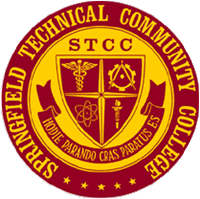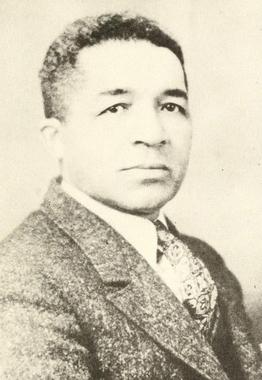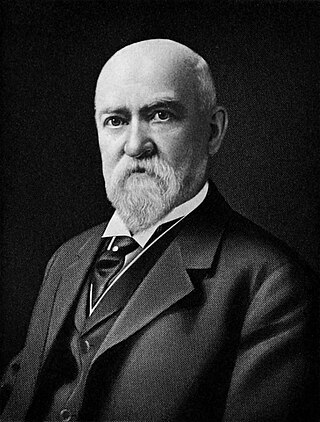
Springfield is the largest city in and the seat of Hampden County, Massachusetts, United States. Springfield sits on the eastern bank of the Connecticut River near its confluence with three rivers: the western Westfield River, the eastern Chicopee River, and the eastern Mill River. At the 2020 census, the city's population was 155,929, making it the third-largest city in the Commonwealth of Massachusetts and the fourth-most populous city in New England after Boston, Worcester, and Providence. Metropolitan Springfield, as one of two metropolitan areas in Massachusetts, had a population of 699,162 in 2020.

Peabody is a city in Essex County, Massachusetts, United States. The population was 54,481 at the time of the 2020 United States Census. Peabody is located in the North Shore region of Massachusetts, and is known for its rich industrial history.

Agawam is a city in Hampden County, Massachusetts, United States. The population was 28,692 at the 2020 census. Agawam sits on the western side of the Connecticut River, directly across from Springfield, Massachusetts. It is considered part of the Springfield Metropolitan Statistical Area, which is contiguous with the Knowledge Corridor area, the 2nd largest metropolitan area in New England. Agawam contains a subsection, Feeding Hills. The Six Flags New England amusement park is located in Agawam, on the banks of the Connecticut River.

Chicopee is a city located on the Connecticut River in Hampden County, Massachusetts, United States. At the 2020 census, the city had a population of 55,560, making it the second-largest city in Western Massachusetts after Springfield. Chicopee is part of the Springfield, Massachusetts Metropolitan Statistical Area. The communities of Chicopee Center (Cabotville), Chicopee Falls, Willimansett, Fairview, Aldenville, Burnett Road, Smith Highlands and Westover are located within the city.

Holyoke is a city in Hampden County, Massachusetts, United States, that lies between the western bank of the Connecticut River and the Mount Tom Range. As of the 2020 census, the city had a population of 38,247. Located 8 miles (13 km) north of Springfield, Holyoke is part of the Springfield Metropolitan Area, one of the two distinct metropolitan areas in Massachusetts.

Westfield is a city in Hampden County, in the Pioneer Valley of western Massachusetts, United States. Westfield was first settled by Europeans in 1660. It is part of the Springfield, Massachusetts Metropolitan Statistical Area. The population was 40,834 at the 2020 census.

West Springfield is a city in Hampden County, Massachusetts, United States. It is part of the Springfield, Massachusetts Metropolitan Statistical Area. The population was 28,835 at the 2020 United States Census. The city is also known as "West Side", in reference to the fact that it is on the western side of the Connecticut River from Springfield, a fact which played a major part in the town's early history.

The Springfield Armory, more formally known as the United States Armory and Arsenal at Springfield located in the city of Springfield, Massachusetts, was the primary center for the manufacture of United States military firearms from 1777 until its closing in 1968. It was the first federal armory and one of the first factories in the United States dedicated to the manufacture of weapons. The site is preserved as the Springfield Armory National Historic Site, Western Massachusetts' only unit of the national park system. It features the world's largest collection of historic American firearms.

Springfield Technical Community College is a public technical college in Springfield, Massachusetts. It is the only technical community college in the Commonwealth of Massachusetts. Located on the site of the Springfield Armory National Park, which was founded by Henry Knox and George Washington during the Revolutionary War, Springfield Technical Community College now occupies many of the buildings used by the U.S. Armory at Springfield prior to the Armory's closure in 1969. While 20 acres (81,000 m2) of the 55-acre (220,000 m2) site remain in the hands of the U.S. National Park Service for historic preservation, 35 acres (140,000 m2) comprise the college campus. Numerous historic buildings have been repurposed as classrooms, in addition to newer facilities built on-site.
Nazareth is a town in the Thoothukudi district in the Indian state of Tamil Nadu.

Shepley, Rutan and Coolidge was a successful architecture firm based in Boston, Massachusetts, operating between 1886 and 1915, with extensive commissions in monumental civic, religious, and collegiate architecture in the spirit and style of Henry Hobson Richardson.
Presbyterian Mission Agency is the ministry and mission agency of the Presbyterian Church (U.S.A.). Founded as the Western Foreign Missionary Society by the Presbyterian Church in the United States of America in 1837, it was involved in sending workers to countries such as China during the late Qing dynasty and to India in nineteenth century. Also known as the Foreign Missions Board in China, its name was changed by the Old School body during the Old School–New School Controversy to the Presbyterian Board of Foreign Missions.

Benjamin Franklin Hubert served as president of Georgia State Industrial College for Colored Youth and Georgia State College from 1926 until 1947.
The School for Christian Workers was a school established by Rev. David Allen Reed in Springfield, Massachusetts in 1885 to prepare young men for work as Sunday school superintendents, secretaries of Young Men's Christian Associations, pastors, lay assistants, Bible colporteurs, and lay home mission workers.

Metro Center is the original colonial settlement of Springfield, Massachusetts, located beside a bend in the Connecticut River. As of 2019, Metro Center features a majority of Western Massachusetts' most important cultural, business, and civic venues. Metro Center includes Springfield's Central Business District, its Club Quarter, its government center, its convention headquarters, and in recent years, it has become an increasingly popular residential district, especially among young professionals, empty-nesters, and creative types, with a population of approximately 7,000 (2010.)

Williston School is a school in Wilmington, North Carolina. It was first founded in 1866 by the abolitionist American Missionary Association after the Union army occupied the city during the civil war. It was intended for freed slaves and initially had 450 pupils divided into five departments: primary, intermediate, advanced, normal and industrial. As it developed, it became known by a variety of names including Williston Graded School, Williston Primary and Industrial School and Williston High School. The original site was on Seventh Street but in 1915, the institution moved to a new campus on Tenth Street and new buildings were constructed in 1933, 1937 and 1954. The institution was closed as a high school in 1968 as part of desegregation and this caused disturbances resulting in the Wilmington Ten. The remaining school on the site is now Williston Middle School of Math, Science & Technology.

Lucy Webb Hayes National Training School was a religious training school, now a hospital, in Washington, D.C. So named in memory of Lucy Webb Hayes, the wife of former President Rutherford B. Hayes. It was founded in 1891 and was the authorized training school of the Woman's Foreign Missionary Society of the Methodist Episcopal Church, which owned the property of the school, exercised supervision and jurisdiction over its management, and looked to it to supply the trained workers employed by the society in its widely diversified fields of labor. The privileges of the school were not, however, confined to those connected with the Woman's Home Missionary Society. It opened its doors to all who wanted to prepare themselves for any department of Christian activity. In 1894, the school was chartered by act of Congress in conjunction with the Deaconess Home and Sibley Memorial Hospital, and formed with them one corporation. The unified administration and guaranteed the training of Christian workers.

The Flats is a neighborhood in Holyoke, Massachusetts located to the east of the city center, adjacent to the downtown. Although it lies at one of the lowest elevations in Holyoke, its name derives not from topography but from the brick tenement "flats" which characterized its architecture throughout much of its history. Historically the area has also been associated with the name Depot Hill, as it was the location of the city's first freight and passenger railway stations; passenger service was restored at Holyoke station in 2015, following a period of absence after 1967. A section of the neighborhood between Lyman and Appleton Street to north and south respectively, and between Race and Bowers Street to the east and west is also known as Depot Square. Today the area features the Holyoke Innovation District, Canal System, Hadley Falls Company Housing District, Marcella Kelly Elementary School, local Amtrak station and 275 acres (111 ha) of residential, commercial, and industrial zoning.

Eugene C. Gardner (1836–1915) was an American architect and author of Springfield, Massachusetts. Gardner was noted both for the architectural influence of his extensive practice as well as his writings on the American home. Gardner was the most notable architect of Springfield.

Francis R. Richmond (1851-1907) was an American architect practicing in Springfield, Massachusetts.